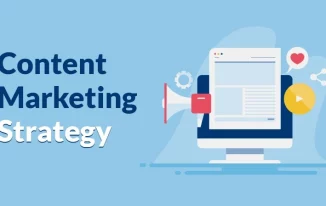Multichannel marketing is the latest buzzword in business. It's the practice of using multiple channels, such as online, offline, social media, and mobile, to reach and engage customers.
The main idea behind this Multichannel Marketing Strategy is to reach the target market in a more creative and effective way. This is a great strategy for companies who are looking to expand their customer base and increase their profits.
Many business owners are starting to realize the importance of multichannel marketing, but they don't know how to get started
Multi-Channel Marketing: What Is It?
Unsurprisingly, many organizations describe multi-channel marketing as interacting with and promoting to prospects and consumers through a variety of online and physical channels.
Multi-channel marketers are those who determine the channels their target customers use and comprehend how their target customers switch between channels to produce a consistent experience.
You are not necessarily running a successful multi-channel campaign simply because you are applying a broad variety of strategies and platforms to communicate with your target audience; this does not guarantee that you will be successful in obtaining the outcomes you wish from your efforts. Multi-channel marketing strategies need to meet the following requirements in order to be successful:
1. Define your target audience
Your target audience is the particular group of customers most likely to be interested in your product or service and, as a result, the group who should see your advertising efforts. First and foremost, you need to define your target audience.
Who are you trying to reach and what are their needs? Once you know this, you can begin to develop a marketing strategy that is specifically tailored to them. You also need to consider the channels that your target audience is using
2. Create a customer character
It is essential to have a well-defined consumer profile (or numerous ones) that includes details about their perfect customer.
This data aids marketers in selecting the platforms on which to concentrate their efforts as well as the tone and content to use. These buyer persona templates can be used to develop distinctive, personalized customer identities for your company.
3. Pick the networks you want to focus on
Without a question, you would appear everywhere if you could, but the truth is that multi-channel marketing that works well can be expensive. As you develop your plan, create content, and pay for advertisements or paid advertising, each platform requires a greater time and financial commitment.
You must choose which networks to focus on because of this. There may be some platforms that are more appropriate than others based on your consumer profile and your particular objectives. Begin with those and then add more as you experience success.
4. Invest In Marketing Automation
Without marketing tools, multichannel marketing is an impossible goal to achieve. You need access to the appropriate marketing tools in order to generate content, organize postings, and track progress across all of your marketing channels.
Imagine that you want to focus on Facebook, Instagram, and Twitter in order to raise recognition of your business. In that situation, you absolutely have to make the financial investment in the powerful SMM panel so that your campaigns can be supported across all social media marketing platforms.
In a similar fashion, you need specialized tools for email marketing, content marketing, and other types of marketing.
5. Protect your brand
People are always trying to take your business and your products. Your brand is your most valuable asset. Not only do you want to protect it from any possible harm but you also want to make sure that it's always visible to potential customers.
This is why it's so important to launch a successful multichannel marketing strategy.
6. Less integrated
With multichannel marketing, a consumer who views an item on your website but wants to buy it from one of your stores is required to verify for themselves whether or not the item is in order at the store in which they want to make the purchase.
On the other hand, when using a multichannel marketing strategy, the customer can use the website to find out where the object is available for purchase in-store and reserve it for a later click-and-collect purchase.
That way, they won't have to waste a drive or their time calling up to verify if the item is available in store, which will save them time and money.
7. Develop your credit measurement strategy
Marketers will need to closely monitor the outcomes of their multi-channel strategy as more channels come into action. They will learn which channels were successful, which networks impacted other paths, and which networks they should stop using through closed-loop analytics.
You might want to take credit models like these into consideration as you assess performance:
- The linear attribution model: This assigns identical credit for each contact point per transaction while disregarding impact.
- Time Decay Model: Increasing the correlation to the most recent contact locations with the time decay model.
- Position-Based Approach: Giving more credit to contact locations during specific phases of the lead's lifetime.
8. Drive interaction
The road to effective marketing does not only go in one direction. You need to strike up a significant conversation with your target audience and encourage them to respond with, comment on, and share your material in order to generate outcomes.
Multi-channel marketing strategies, like so many other aspects of marketing, may sound complicated but are, in reality, quite easy. In this post, we've discussed how to launch a successful multichannel marketing strategy.
From planning your strategy to executing it flawlessly and by following these steps outlined, you'll be on your way to reaching your marketing goals.





